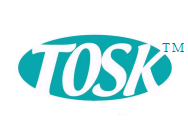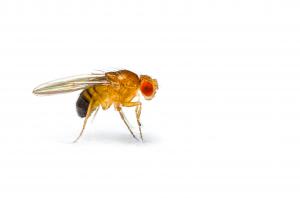Fruitfly: From Kitchen Counter to Drug Discovery

Drug developer Tosk, Inc.,
Leading researchers use fruit fly to discover breakthrough cancer drugs
Tosk became the first drug company to use the fruit fly to develop a drug that successfully completed a human clinical study, eliminating the toxic side effects of common cancer drugs.”
MOUNTAIN VIEW, CALIFORNIA, USA, August 9, 2019 /EINPresswire.com/ -- Most of us first encountered fruit flies when they found their way into our kitchens or crashed our summer picnics. They were annoying, and no matter how hard we tried, we couldn’t bat them all away. Little did we know then that these were very sophisticated animals that could smell an apple core from a mile away.
Our next encounter with the fruit flies may have been in biology class, where our instructor told us to call them by their proper name, Drosophila melanogaster, and explained that they had a lot to teach us about inherited traits. They looked remarkably handsome under the microscope. Some had white eyes, some had red eyes. Eye color and other differences led to a discussion of mutations, chromosomes, genes, and other fundamentals of biological science.
— Bill Garland, PhD, Tosk Executive Vice President, R&D
As we looked at the magnified fruit fly, we were following a path trodden by some of the world’s greatest scientists and looking at an insect that has played an important role in scientific research as far back as the turn of the last century. In fact, six Nobel prizes in medicine or physiology have been awarded to 10 scientists based on their research using the fruit fly, half of them since 2004, the latest in 2017. The first of these was in 1933, when Thomas Hunt Morgan was recognized for using fruit flies to confirm the role of chromosomes and genes in heredity and mutations.
Despite the long-standing use of fruit flies in basic science, remarkably, they have not been widely used for drug discovery. The mantra of the pharmaceutical industry has been “target discovery,” a process by which a disease-related molecular structure is identified, and then, computer modeling and high throughput screening methods are used with biochemical and cell assays to identify drug candidates to address the target, either to amplify or block it.
A pharmaceutical company with a contrarian approach to drug discovery, one that does harness the fruit fly as a discovery tool, is privately held Tosk, Inc.
Tosk’s highly experienced scientists have developed two new drug discovery platforms that use fruit flies to identify new drugs to combat cancer and other diseases. Tosk, like the Nobel prize winners, uses the fruit fly because it has surprising similarities to humans at the genetic and molecular levels, according to Bill Garland, PhD, Tosk’s executive vice president of research and development.
Dr. Garland, a pharmaceutical industry veteran, who, among other lerading ompanies, spent 20 years in drug discovery and development at Hoffmann-LaRoche, says that nearly 70 percent of human disease-related genes have analogs in Drosophila. And because the life cycle of the fruit fly is short, only 50 days from birth to death and only two weeks from birth to adulthood, drug discovery in flies can be done quickly and cost effectively. Demonstrating this breakthrough, Tosk recently reported the first drug discovered in a fly to successfully complete a human clinical study. Known as TK-90, this drug showed the capability to prevent mucositis, the painful, life threatening, and dose-limiting side effect of several important cancer drugs and radiation therapy.
Tosk discovered TK-90 using its Side Effect Fly™ technology, which is designed to discover drugs to prevent the adverse effects of widely used medications. In the parlance of the US Food and Drug Administration, TK-90 is a “new chemical entity (NCE)”, something that has never been tried as a drug treatment. Tosk plucked this drug out of tens of thousands of compounds by testing them in fruit flies. Tosk incubated each compound with a toxic chemotherapeutic that would otherwise prevent eggs from hatching and developing. Compounds that increased survival of the flies' eggs and resulted in larva or mature fruit flies were considered "hits." The hits were then tested in cell culture models using human cancer cells to select "leads" that did not block the cancer killing efficacy of the chemotherapy. Tosk’s researchers then used traditional rodent models to confirm safety, adverse effect prevention, and non-interference with the beneficial effects of the cancer chemotherapeutic.
Instead of picking a target and fitting compounds to match, as most pharmaceutical companies do, Tosk lets the Drosophila tell it which compounds are safe and effective. Then, Tosk works backward to identify the molecular target or targets through which the drug works, opening a new vista on the process of drug discovery. Tosk’s second fruit fly discovery method is called the Genetically Modified Fly™. It is designed to find drugs that block the activity of mutant human genes. Tosk is deploying this technology to discover treatments for conditions that were previously considered “undruggable.” The first target is a mutant cancer gene called kRAS that is responsible for driving as many as 30 percent of all cancers.
The US National Cancer Institute thought highly enough of this approach to award Tosk a $2 million grant to pursue its kRAS drug discovery program. On the bench, Tosk’s two fly models look much the same. However, the flies themselves are quite different. The Genetically Modified Fly model deploys a fruit fly with a human gene integrated into its genome in such a way that the fly has a bent wing or a different eye color. The company then screens compounds for their ability to block the activity of the gene and reverse this trait. Tosk believes that this technology will make heretofore undruggable disease targets druggable. Given Tosk’s success in using fruit flies in its pharmaceutical research and development, the question remains, why aren’t others doing the same? Fruit flies are inexpensive to raise and very efficient to use as a screening tool. They offer researchers working to develop drugs a “flying” head start to find leads that might not be possible to identify using traditional methods. Whatever the reason, Tosk has devised new approaches to the drug discovery process, and its drug TK-90 is early proof that these methods can work, and work well.
Brian Frenzel
Tosk, Inc.
+1 408-245-6838
email us here
The Tosk Challenge

